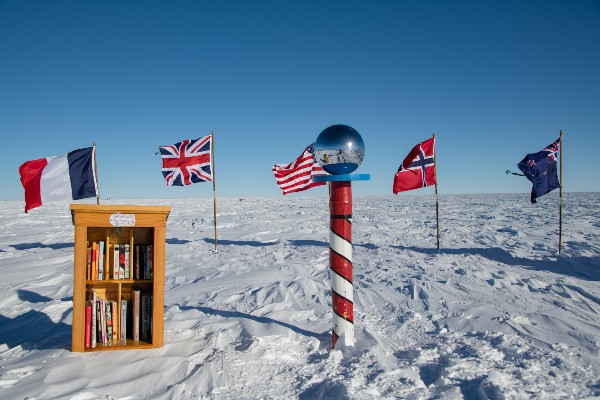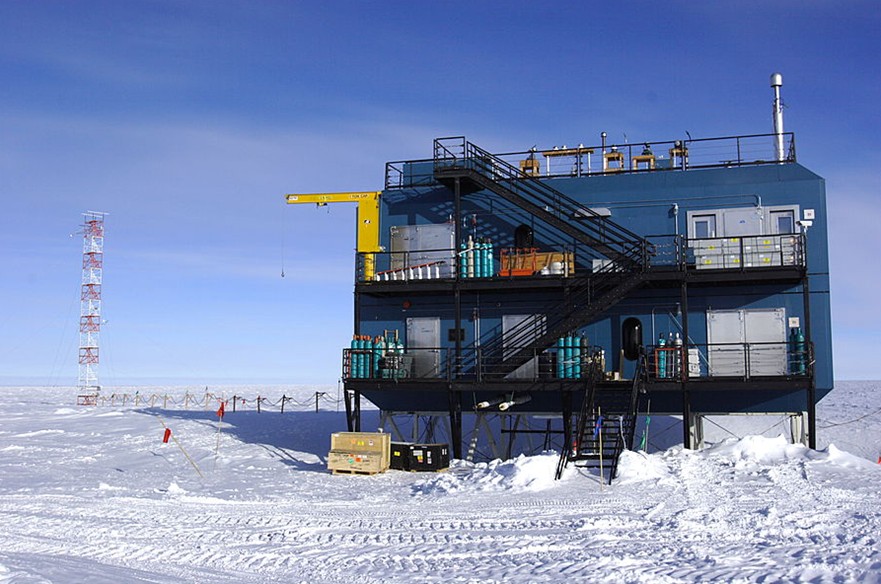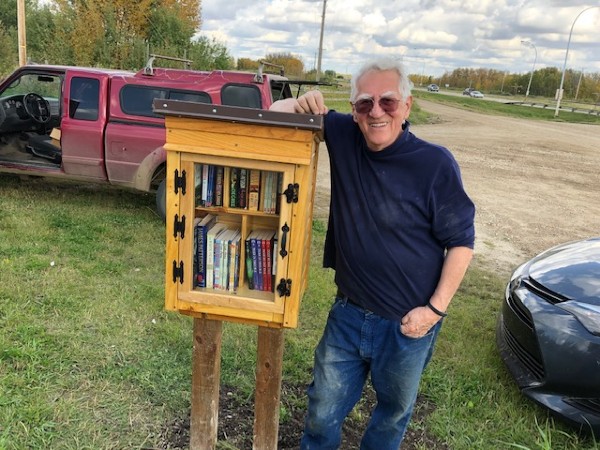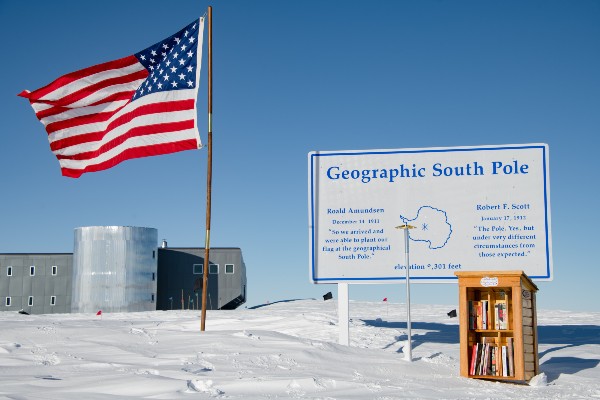There are now Little Free Libraries on all seven continents! We are thrilled to introduce the first Little Free Library in Antarctica, which was established by Dr. Russell Schnell at the South Pole.
Dr. Schnell—an atmospheric scientist for the National Oceanic and Atmospheric Administration (NOAA) and co-recipient of the 2007 Nobel Peace Prize for his work on the International Panel on Climate Change—built the Little Free Library at his home in Boulder, Colorado, in November then shipped it to the South Pole, where he had previously traveled for work. The Little Free Library (charter #115933) is located inside the NOAA’s Atmospheric Research Observatory (ARO) and holds novels, science fiction books, equipment manuals, and more for staff members to share.
“Books with photos of colorful trees, warm deserts, water, beaches, wheat fields, and animals and birds are popular at the South Pole,” Schnell said. “Everything else is white for hundreds of miles in all directions.”
The Little Free Library brings a sense of community and figurative warmth to the inhospitable South Pole, where there is no sunlight for six months and temperatures can drop to -125 degrees Fahrenheit during the Antarctic winter.


The South Pole Little Free Library is Schnell’s 37th installation. He built his first library in 2013 for his daughter’s home in St. Louis followed by another for his own home. Since then he has created libraries for locations like Mount Fuji, Japan; an Aboriginal area in Warrnambool, Australia; and a First Peoples Cree reserve in Maskwacis, Alberta, Canada. Schnell prides himself on using recycled materials whenever he can. He has eight more libraries ready to be installed, plus requests for more.
“I think that the Little Free Library is such a universally great and easy-to-understand concept that there should be such libraries every few square miles in inhabited areas,” Schnell says.
Schnell’s passion for Little Free Libraries was inspired by not having books of his own growing up.
“I never had access to books as a child,” he said. “Whenever possible later in life I acquired books. Our daughter was once asked on a school questionnaire at age 8, how many books were in her home? She said about 1,000. The teacher thought that answer must have been fantastical. Our daughter was not far off.
“Since I find it easy to build Little Free Libraries and take them around the world, I look upon the activity as a mission to seed them in areas where they might not otherwise be found.”

LFL commends Schnell for his efforts to expand book access in communities around the world.
“We are thrilled to have such an enthusiastic advocate like Dr. Schnell,” said LFL Executive Director Greig Metzger. “It is an honor to be part of his travels, and now, through his effort, have a Little Free Library at the South Pole. While most volunteer library stewards are in less exotic locations, they all share one thing in common: a passion for reading, community and book access.”
There are more than 100,000 Little Free Libraries worldwide, found in all 50 United States, 108 countries and now—thanks to Dr. Schnell—all 7 continents.
December 10, 2020
Get involved: Learn how you can start a Little Free Library of your own or support bringing little libraries full of books to underserved communities.

